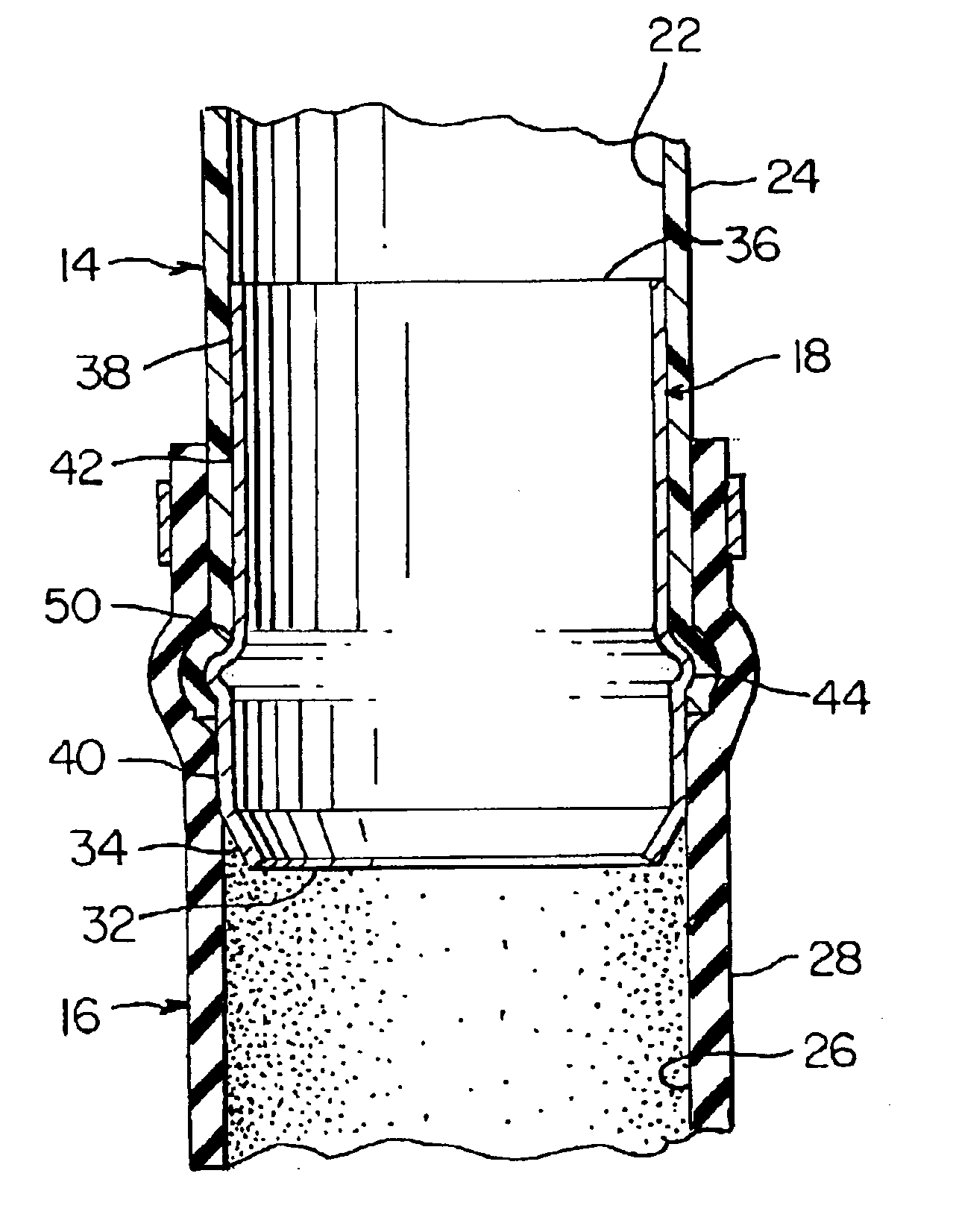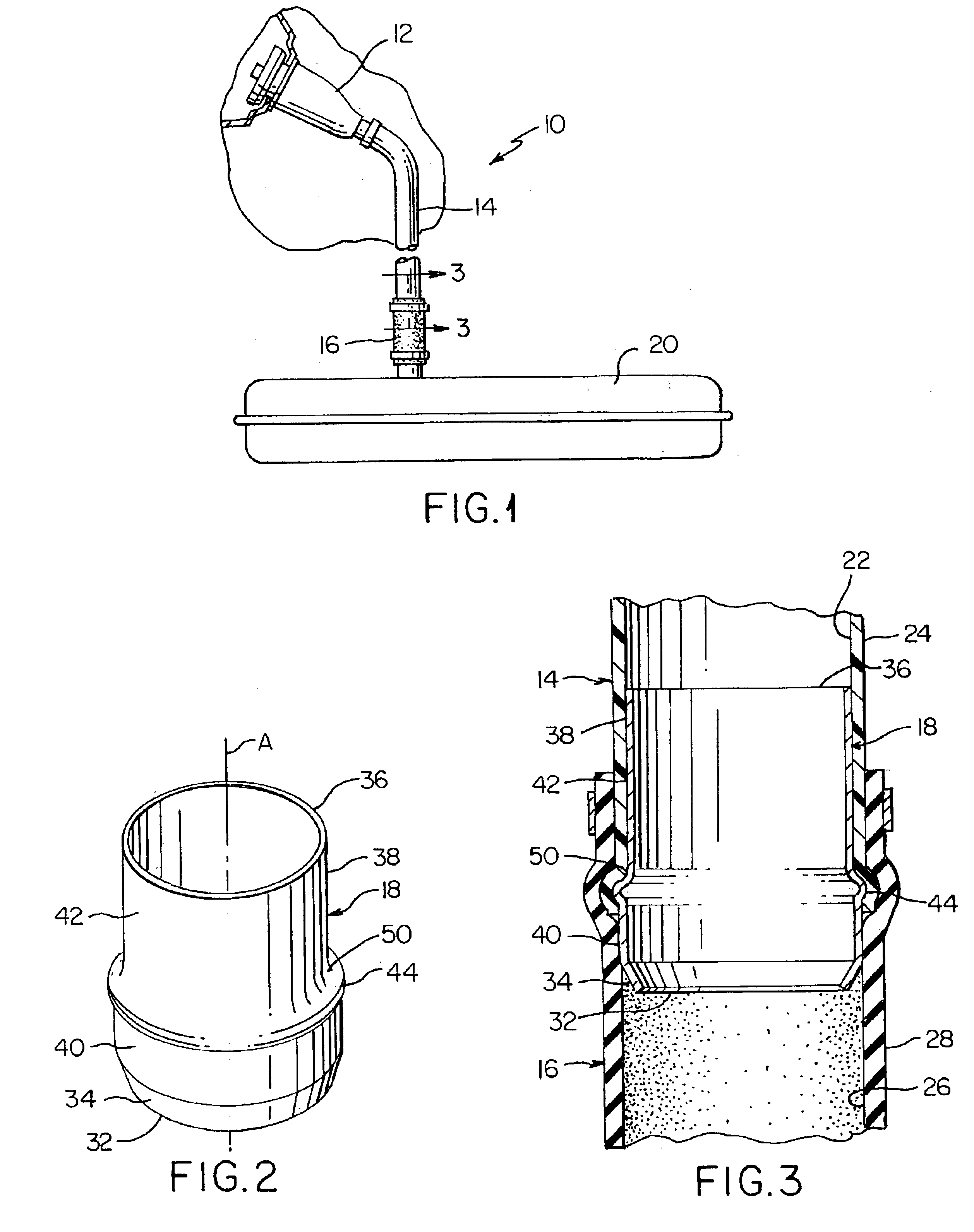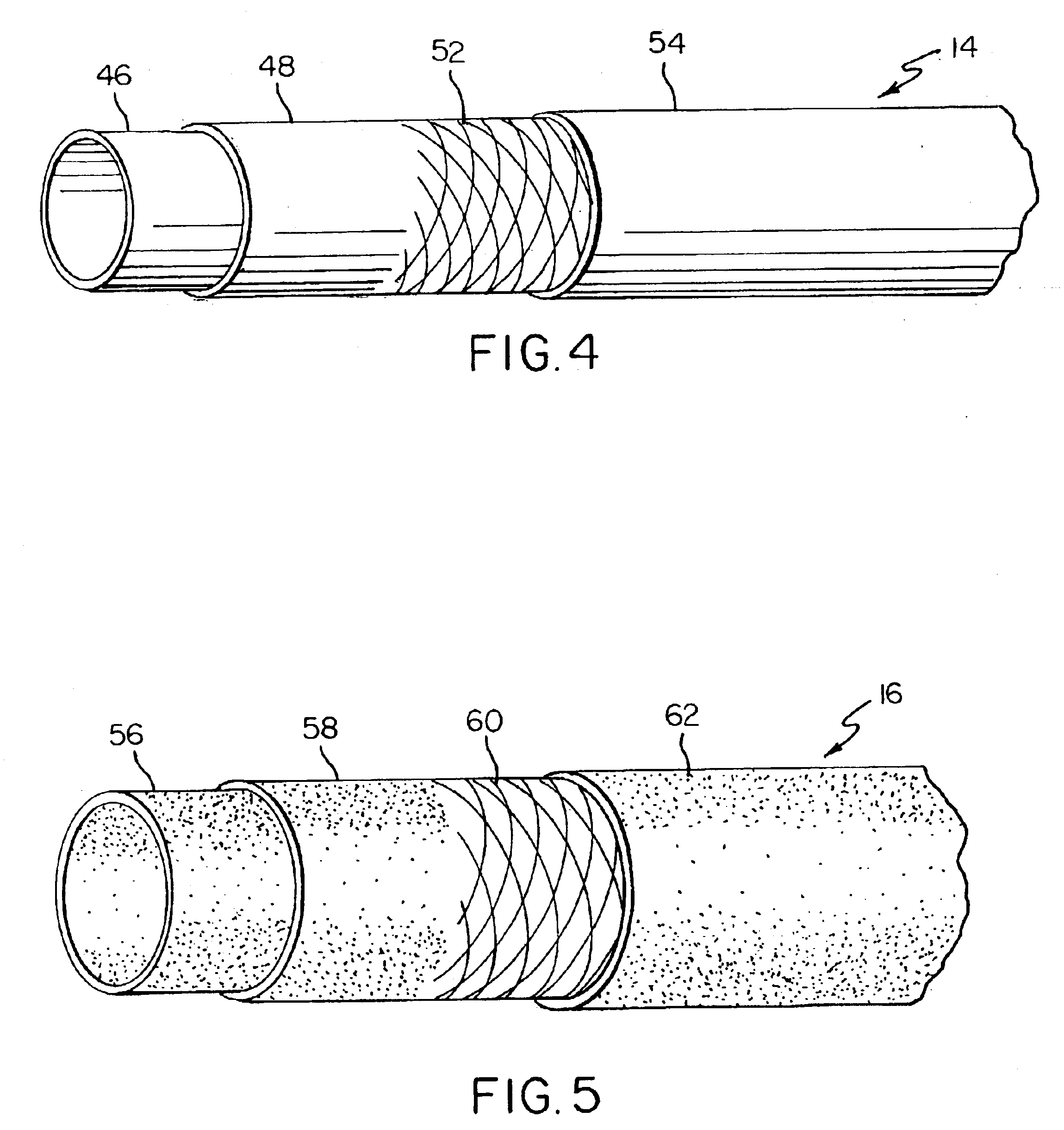Conductive tubular insert for a fuel transport system, and method
- Summary
- Abstract
- Description
- Claims
- Application Information
AI Technical Summary
Benefits of technology
Problems solved by technology
Method used
Image
Examples
Embodiment Construction
[0015]Referring to the drawings, FIG. 1 illustrates one aspect of the invention where a fuel fill tube assembly 10 includes a fuel funnel 12, a first polymeric tubular member 14 which is preferably a thermoplastic material, a second polymeric tubular member 16 which is preferably a rubber material, a conductive connector insert 18 (FIG. 3) connecting the first polymeric tubular member 14 to the second polymeric tubular member 16, and a fuel tank 20. The first polymeric tubular member 14, hereinafter referred to as a plastic or thermoplastic member, includes at least a conductive inner surface 22 and a non-conductive outer surface 24, and the second polymeric tubular member 16, hereinafter referred to as a rubber member, includes at least a conductive inner surface 26 and a non-conductive outer surface 28. In accordance with the invention, the plastic tubular member 14 and the rubber tubular member 16 are connected to each other by the conductive connector 18 such that conductive con...
PUM
| Property | Measurement | Unit |
|---|---|---|
| Pressure | aaaaa | aaaaa |
| Electrical conductor | aaaaa | aaaaa |
| Circumference | aaaaa | aaaaa |
Abstract
Description
Claims
Application Information
 Login to View More
Login to View More - R&D
- Intellectual Property
- Life Sciences
- Materials
- Tech Scout
- Unparalleled Data Quality
- Higher Quality Content
- 60% Fewer Hallucinations
Browse by: Latest US Patents, China's latest patents, Technical Efficacy Thesaurus, Application Domain, Technology Topic, Popular Technical Reports.
© 2025 PatSnap. All rights reserved.Legal|Privacy policy|Modern Slavery Act Transparency Statement|Sitemap|About US| Contact US: help@patsnap.com



